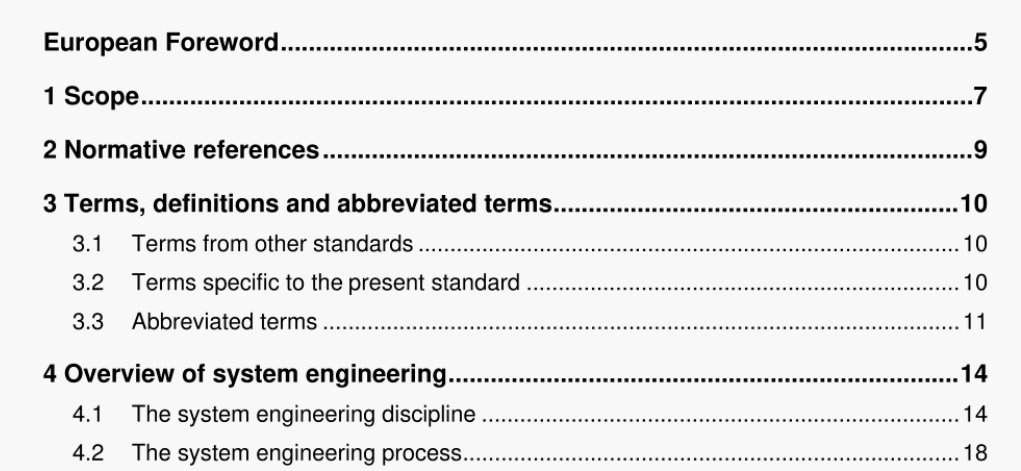BS EN 16603-10:2018 pdf download.Space engineering – System engineering general requirements
4.1 The system engineering discipline
System engineering is an interdisciplinary approach governing the total technical effort to transform requirements into a system solution. A system is an integrated set of elements to accomplish a defined objective. These elements include hardware, software, firmware, human resources, information, techniques, facilities services, and other support elements. In this standard the concept of “system” is used in a wide sense. The highest level, often called “mission level” or “space system”, consists usually of one (or more) space segment(s), of a ground segment, and of a user segment. Elements of system decomposition are also considered a system. For the purpose of this standard the system can be any element at any level of decomposition as defined by the function tree (see Annex H) or the product tree (see ECSS-M-ST- 10 Annex B). The scope of an element can incude hardware, software, procedures, man-in-the-loop, facilities and services. From the perspective of the considered system, requirements originate from the next upper level (the customer) and elements are procured from the next lower level (the suppliers).
NOTE 1 The customer supplier model is described in ECSS- S- ST-0O. NOTE 2 Through this standard the notion of customer refers to several actors ,in relation to the project phase. In fact a customer can be e.g. a scientific community in phase 0, a commercial user in phase A or an Agency in phase B. A supplier can on the other hand be an Agency in both phase 0 and phase A. Figure 4-1 shows the boundaries of system engineering (for which the indicated interactions between the identified major disciplines is not exhaustive but indicative), its relationship with production, operations, product assurance and management disciplines (and their cross-interaction is indicated as “interface areas” in the figure) and its internal partition into the following system engineering sub-functions: ● requirement engineering, which consist on requirement analysis and validation, requirement allocation, and requirement maintenance; ● analysis, which is performed for the purpose of resolving requirements conflicts, decomposing and allocating requirements during functional analysis, assessing system effectiveness (including analysing risk factors); and complementing testing evaluation and providing trade studies for assessing effectiveness, risk, cost and planning ● design and configuration which results in a physical architecture, and its complete system functional, physical and software characteristics; ● verification, which objective is to demonstrate that the deliverables conform to the specified requirements, including qualification and acceptance; system engineering integration and control, coordinating the various engineering disciplines and participants throughout all the project phases.
BS EN 16603-10:2018 pdf download
